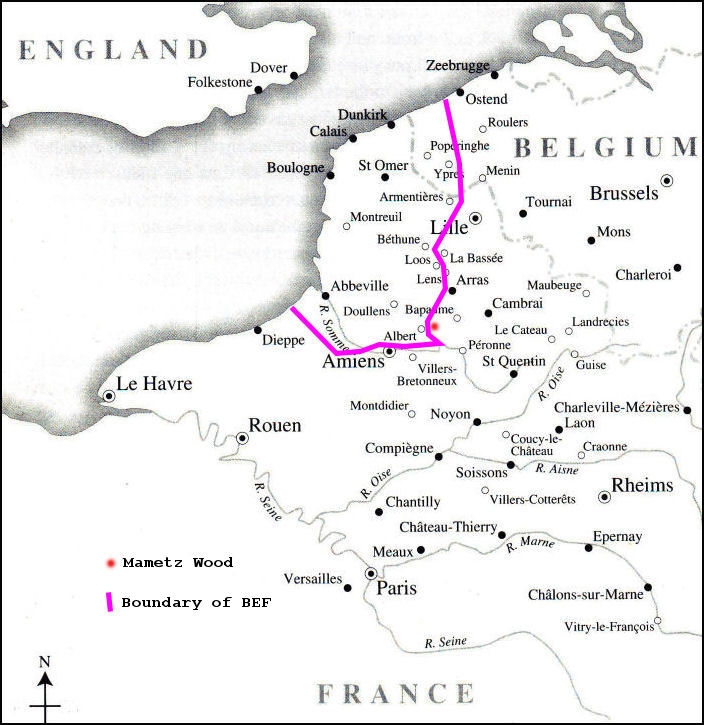Any visitor to the 1916 Somme battlefields
today will quickly spot an unusual feature
in the rolling open countryside. These are the angular and compact woods that
liberally sprinkle an unremarkable countryside otherwise dominated by monuments
and military cemeteries in the area where the some of the most concentrated and
prolonged fighting of the Great War took place. Many smaller groups of trees are
also to be seen. These tree features were often the only visual elements in an
otherwise blank countryside. For this reason alone they became the natural
fortresses in the five months of fighting that relentlessly raged across the valley of
the upper Somme in1916.
Today, many of the regrown woods occupy
precisely the same place, and have the
same aspect, as they did in early 1916, when British soldiers marched into their
trench-lines along much the same roads as we travel in our cars today. Some of the
woods are still defined by the original lines of minor roads and tracks that marked
their bounds in 1916. At the outbreak of the Great War, Mametz Wood was said to
be a tasteful collection of limes, oaks, hornbeams, hazel and the occasional beech.
By the time of the Battle of the Somme in midsummer 1916 brambles and saplings
had taken over much of the ground cover, due to the lack of maintenance of the
woods in the two years since the war began.

Mametz Wood is sited slightly to
the north east of Mametz village. In 1916 it had
been incorporated into the long line of German defences that snaked from the North
Sea coast near Ostend to the border country between France and Germany to the
east of Rheims and then along the River Rhine. The wood was actually positioned
at the point where the 4th Army of the British Expeditionary Force, its southernmost
military group, met up with the positions of the French 6th Army. The boundary
between the British and French at this point was marked by the River Somme. This
relatively small and insignificant piece of woodland became an infamous killing
ground of the Great War because it was one of the first objectives of the 4th Army's
campaign to break through the German trenches between the villages of Fricourt,
Mametz and Montauban
The battle was scheduled for 1st July
1916 and the day's aim was to take the
Bazentine Ridge, a small piece of chalk downland between the villages of Serre
and Montauban.
Only one of the campaign's objectives
was met and it was not until just after midday
on 12th July that British troops finally succeeded in clearing Mametz Wood of
Germans. Its capture can be attributed wholly to the 38th (Welsh) Division
operating for three days on the 7th to 9th July with casualties totalling almost 4,000
including 600 dead. To this toll must be added the casualites for the initial days of
the battle, which on 1st July alone amounted to 57,470 officers and men, 19,240 of
them killed and 2,152 missing. The date July 1st, which marked the opening of the
Battle of the Somme, remains the bloodiest day in the history of the British Army.
The battle took place on a twelve mile
front and the outcome was that the British
line moved at most, about a mile into German held territory. Altogether the advance
amounted to a gain of about three square miles. There was no breakthrough.

